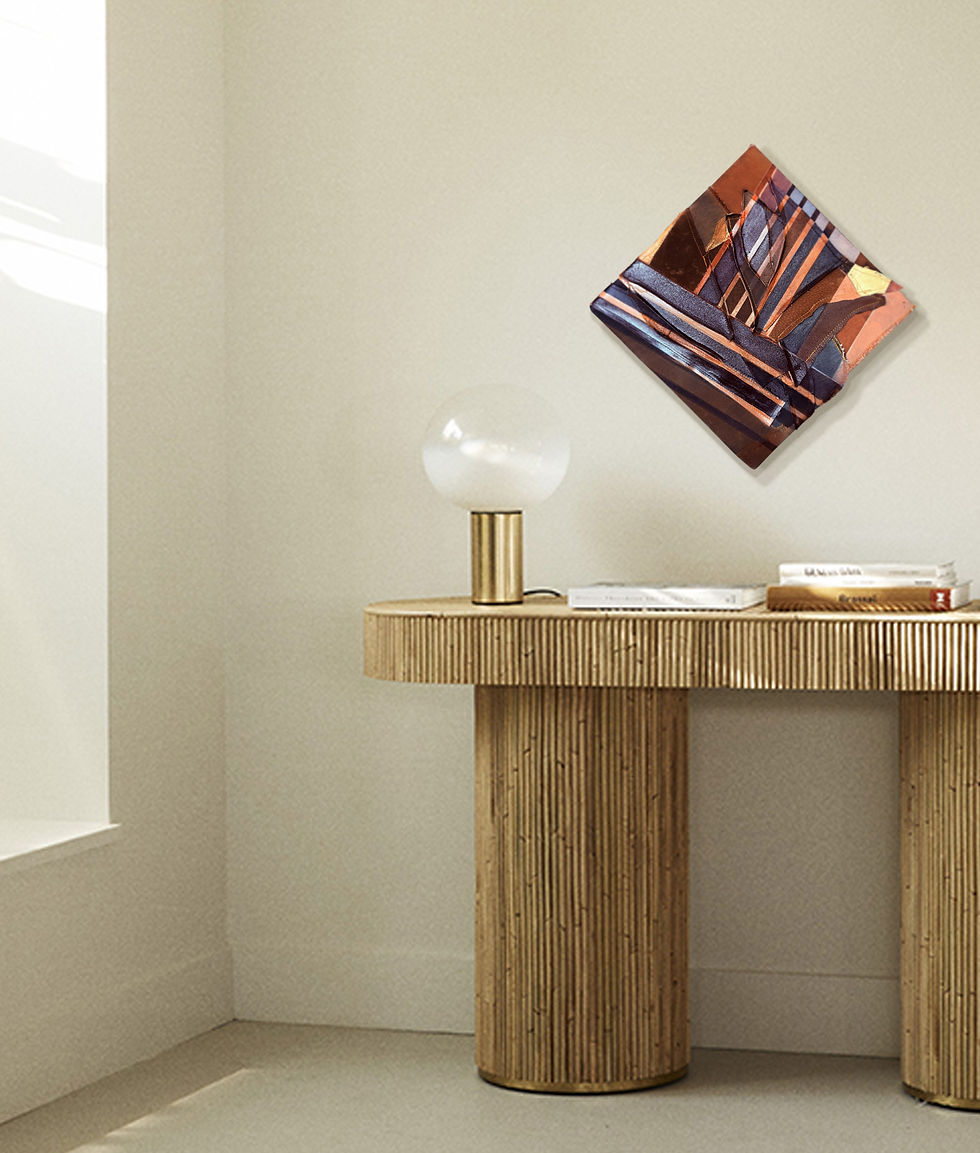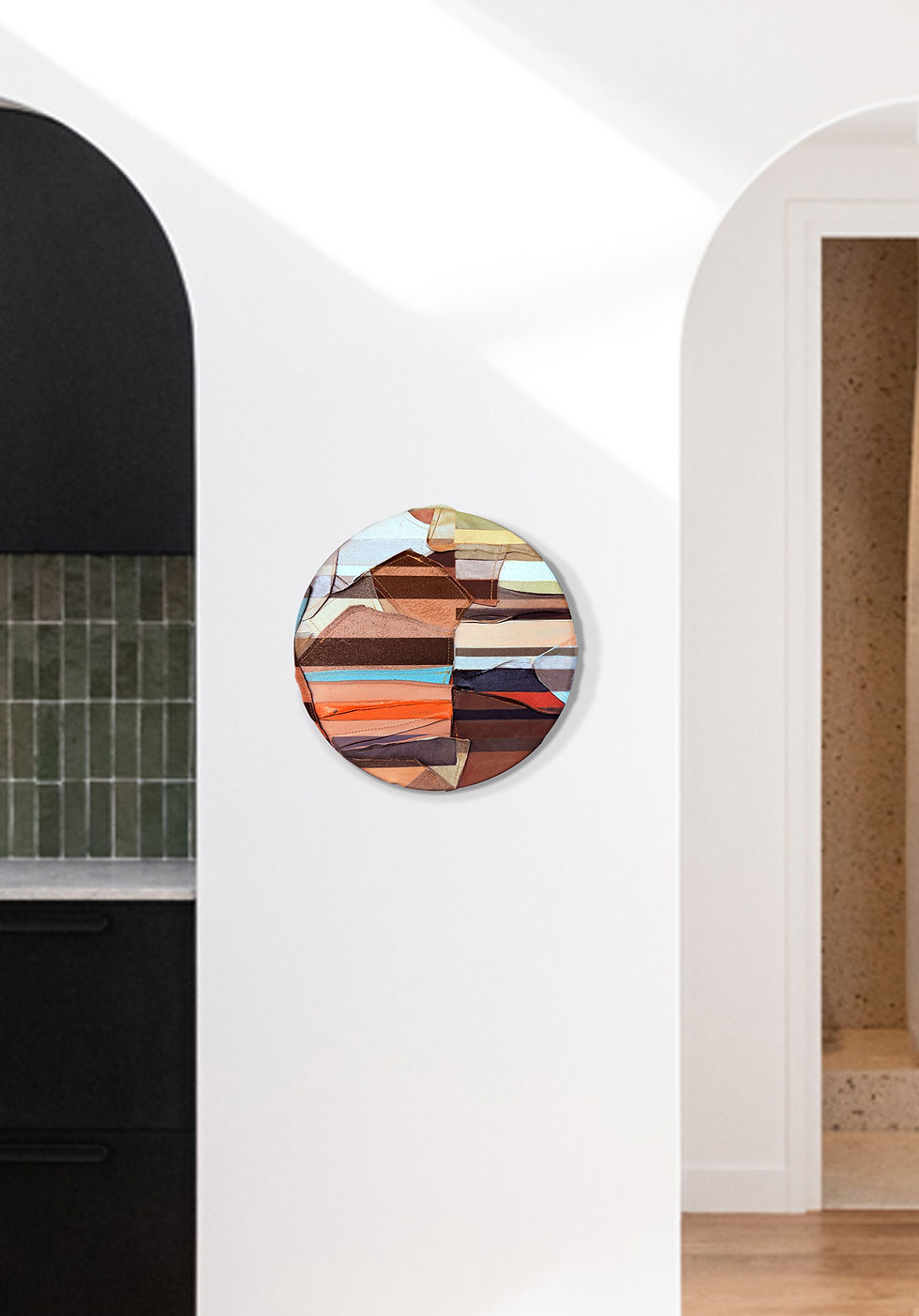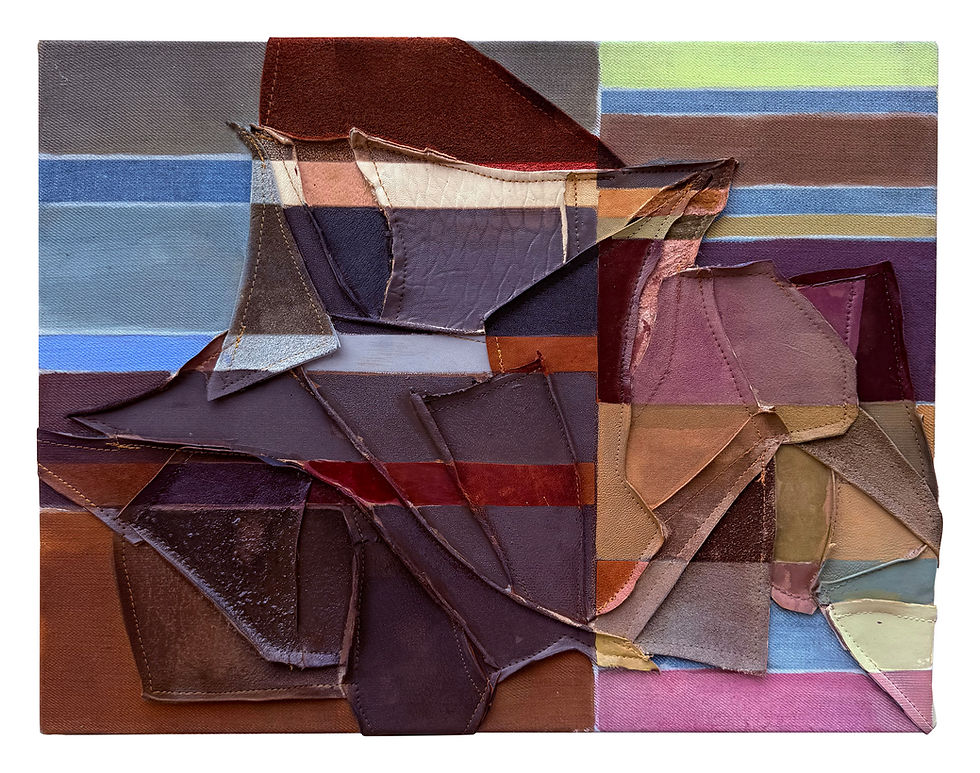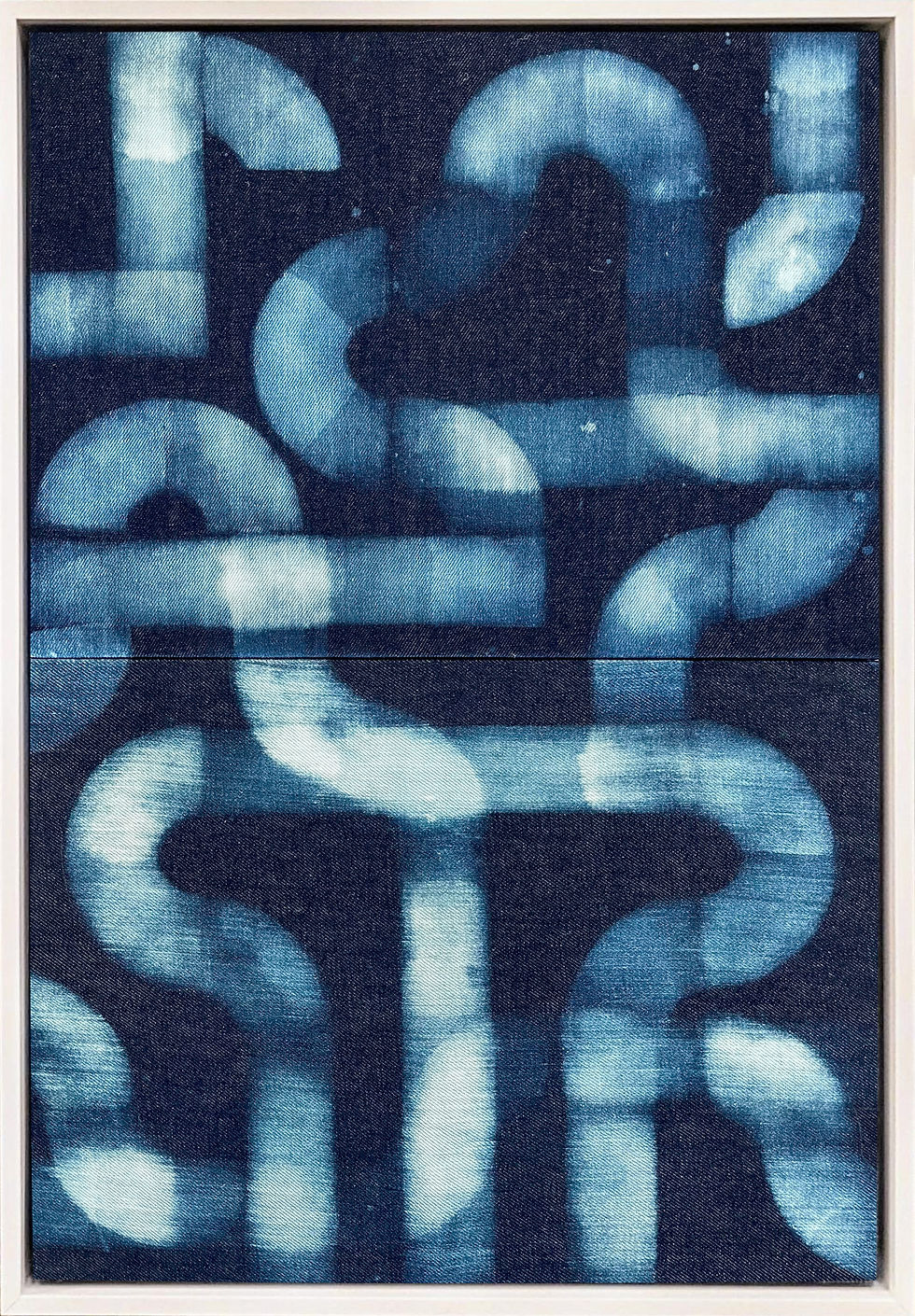SERIES
PULSE
The subtle yet profound sensation of attuning to the rhythms of our bodies—mentally and physically—is a symphony we often overlook. Pulse invites us to pause, listen, and explore the intimate rhythms that move us from within.
For years, circular shapes have been central to my work, mirroring the pulse that drives my creativity. But now, I’ve shifted from round forms to stripes—linear yet organic, fluid, and alive. This evolution reflects my journey beyond the familiar, embracing a new rhythm that feels expansive and unpredictable.
The past few months have been filled with anxiety, but I now feel as though I’m breaking free from that closed loop—stepping into a space of clarity and hope. Pulse is a return to my artistic foundation, a rediscovery of my creative essence as I move into this next chapter of my life.
This series is an invitation to listen, to feel, and to resonate with the pulse that surrounds us all.
OUR LEGACY
The works in this exhibition present a deep and personal tapestry of my family's history. The show traces the origins of a union that transcended tribal boundaries, a testament to love's power to bridge divides. The seed was planted in my mind by the memory of my great aunt’s Moroccan wedding dress (El-Keswa El-Kbira) – an heirloom that represents the beauty and rich culture of the Sephardic diaspora. As I examined my family lineage, I discovered an ever-changing world – one marked by escalating intra-Jewish tensions that necessitated the concealment of our roots, particularly the precious North African heritage.
This body of work comes from profound self-discovery. The mosaics are painstakingly assembled from cherished recycled fabrics and scraps of leather, generously bestowed upon me by my community. The strength and resilience of these materials is informed by the struggle my people have endured for millennia. Following a transformative family pilgrimage to Morocco, I returned home laden not only with physical souvenirs, but also with treasured ancestral narratives. With these, I am reconstructing my family’s history and identity.
Amidst the current backdrop of war in Israel, this presentation, takes on heightened relevance. It compels us to be introspective to our individual histories and heritage, and ultimately, to confront the question – how do we define our shared humanity? In this pivotal moment, we are entrusted with shaping future generations. How will history judge our behavior, our actions Our Legacy.
MIGRATION
The works in this exhibition present a deep and personal tapestry of my family's history. The show traces the origins of a union that transcended tribal boundaries, a testament to love's power to bridge divides. The seed was planted in my mind by the memory of my great aunt’s Moroccan wedding dress (El-Keswa El-Kbira) – an heirloom that represents the beauty and rich culture of the Sephardic diaspora. As I examined my family lineage, I discovered an ever-changing world – one marked by escalating intra-Jewish tensions that necessitated the concealment of our roots, particularly the precious North African heritage.
This body of work comes from profound self-discovery. The mosaics are painstakingly assembled from cherished recycled fabrics and scraps of leather, generously bestowed upon me by my community. The strength and resilience of these materials is informed by the struggle my people have endured for millennia. Following a transformative family pilgrimage to Morocco, I returned home laden not only with physical souvenirs, but also with treasured ancestral narratives. With these, I am reconstructing my family’s history and identity.
Amidst the current backdrop of war in Israel, this presentation, takes on heightened relevance. It compels us to be introspective to our individual histories and heritage, and ultimately, to confront the question – how do we define our shared humanity? In this pivotal moment, we are entrusted with shaping future generations. How will history judge our behavior, our actions Our Legacy.
THE ART OF GIVING
Love can be expressed in countless ways. For me, art has always been an unconditional love, a gift that keeps on giving.
This holiday season, how will you show love?
I’ve curated a collection of intimate, one-of-a-kind artworks perfect for gifting someone special (including yourself!). By collecting and supporting living artists, you’re not only giving a meaningful piece, you’re helping creativity thrive.

















































